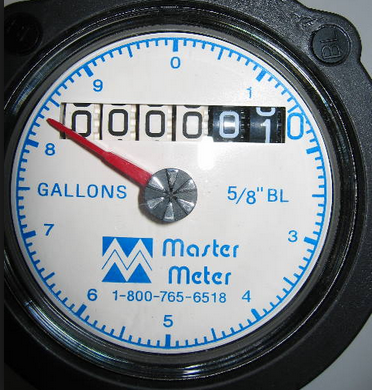STEP 1 Locate your meter pit, generally found towards the front of a property, near the road or your driveway. The pit is typically in a direct line with the main outside faucet. It is housed in a black cylinder with a metal lid. Removing the lid requires a special tool but isn't imposible to access with a wrench.
STEP 2 Once you open the meter pit lid, you'll see the face of the meter. On the face of the meter, there is a large dial and a display of numbers. For the residential meter, each rotation of the dial measures 1 cubic meter. (1000 litres) Read the number display from left to right. This is your meter reading to date. Charges for the amount of water consumed are rounded to the nearest cubic meter used during an annual billing period. You may do your own meter read periodically throughout the year to check for leaks on your property, and we encourage you to do so.
STEP 3 Keep in mind that you might be checking your meter on a date different from the one used for billing. This could result in a difference in the amount you find, compared with the amount on which your bill is based. However, if your reading is considerably higher than what is on your bill, check for a leak or try to determine the source of large water use. If your reading is significantly lower than the reading on your bill, please contact us and let us assist you in determining the problem.
STEP 4 It is the responsibility of the ratepayer to monitor and check for leaks within the home and on your property. Any leaks must be reported and fixed immediately. The board of trustees has passed a new leak policy and excess water usage policy. The board will no longer issue refund cheques to ratepayers found to have an excessive use of water whether it be intentional or accidental. The Otter Lake Water District loses approximatley 20,000 m3 of water annually. That equates to approximately $22,000 in lost revenue.


 Our Meters
Our Meters